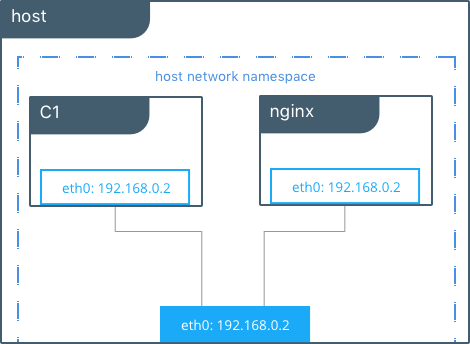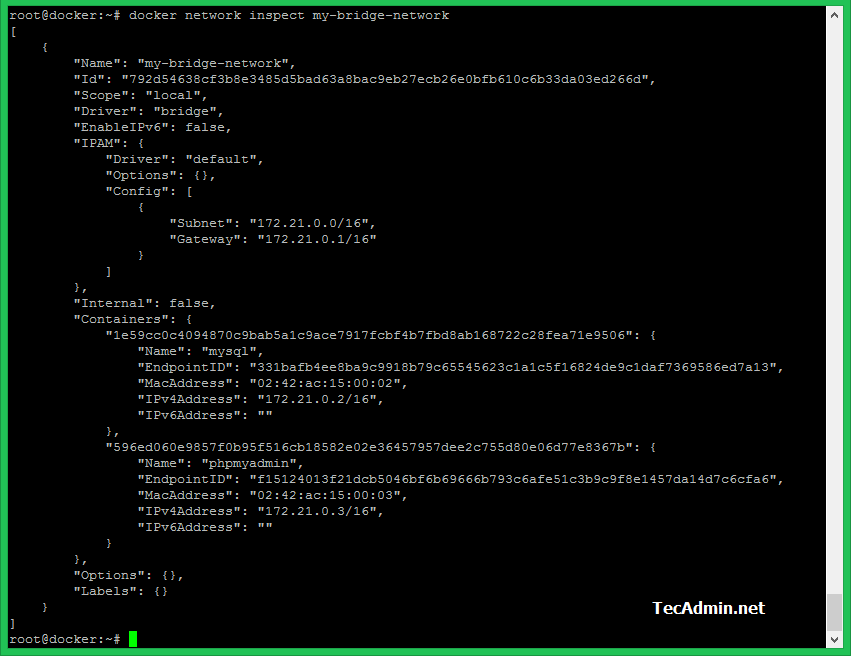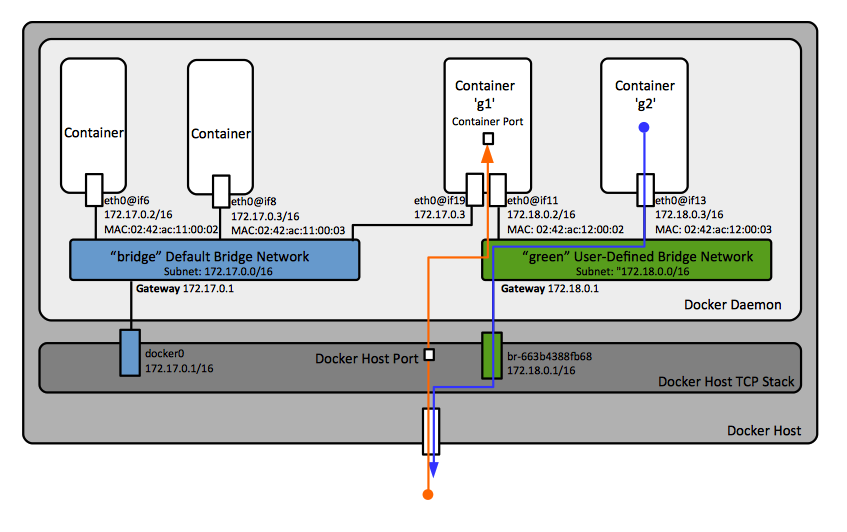
- #Docker network subnet how to
- #Docker network subnet install
- #Docker network subnet drivers
- #Docker network subnet driver
- #Docker network subnet mac
The top line shows the new web1 container running NGINX. docker infoĬONTAINER ID IMAGE COMMAND CREATED STATUS PORTS NAMESĤe0da45b0f16 nginx "nginx -g 'daemon.

Run the docker info command and locate the list of network plugins. The docker info command shows a lot of interesting information about a Docker installation. Do not confuse this with the “bridge” driver.

In the example above we are showing the configuration details for the network called “bridge”. NOTE: The syntax of the docker network inspect command is docker network inspect, where can be either network name or network ID. In this step, you use the docker network create command on the container host (tenant) virtual machine to create an l2bridge network.
#Docker network subnet install
To install the plug-in, run the InstallPrivateCloudPlugin.ps1 script inside the container host (tenant) virtual machine. In this step, you install a plug-in to allow the HNS to communicate with the network proxy on the Hyper-V Host. To enable the network proxy, run the ConfigureMCNP.ps1 script on the Hyper-V Host hosting the container host (tenant) virtual machine. In this step, you enable the network proxy to allocate multiple IP addresses for the container host virtual machine.

New-NetworkControllerNetworkInterface -ResourceId $vmnic.ResourceId -Properties $vmnic.Properties -ConnectionUri $uri $props.PrivateIPAllocationMethod = "Static" $allowallacl = Get-NetworkControllerAccessControlList -ConnectionUri $uri -ResourceId "AllowAll" # For this demo, we will assume an ACL has already been defined any ACL can be applied here $vmsubnet = Get-NetworkControllerVirtualSubnet -VirtualNetworkId $vnetResourceId -ResourceId $vsubnetResourceId -ConnectionUri $uri $vmnic= Get-NetworkControllerNetworkInterface -ConnectionUri $uri | where # Specify Network Controller REST IP or FQDN In this step, we assume the VM NIC of the tenant virtual machine has one IP configuration with IP address of 192.168.1.9 and is attached to a VNet Resource ID of 'VNet1' and VM Subnet Resource of 'Subnet1' in the 192.168.1.0/24 IP subnet. It is recommended for these deployments types that you create the VM NIC resource out of band using Network Controller PowerShell. Multiple IP configurations is not supported on VM NIC resources created through System Center Virtual Machine Manager. Network policy applies to both cross-subnet and cross-host network traffic. Network policy applies only to cross-host or cross-subnet container network traffic.ĪLL network traffic between two container endpoints is forwarded to the physical Hyper-V host regardless of host or subnet. Network policy does not get enforced since network traffic between containers on the same host and in the same subnet do not flow to the physical host.
#Docker network subnet drivers
The differences between the l2bridge and l2tunnel drivers are: l2bridge Network policy (ACLs, encapsulation, and QoS) for these container endpoints are enforced in the physical Hyper-V host as received by the Network Controller and defined in upper-layer management systems.
#Docker network subnet mac
The container endpoints have unique IP addresses but share the same MAC address of the container host (tenant) virtual machine due to Layer-2 address translation. The Host Networking Service (HNS), through the private cloud plugin, dynamically assigns the IP addresses for container endpoints. For both drivers, each container endpoint is in the same virtual subnet as the container host (tenant) virtual machine. For SDN, use the l2bridge and l2tunnel drivers. In the Container network drivers topic, we discussed the multiple network drivers are available through Docker on Windows.
#Docker network subnet driver
You use the l2bridge (and optionally l2tunnel) network driver available with the Windows libnetwork plugin for Docker to create a container network on the tenant VM.
#Docker network subnet how to
In this topic, we show you how to connect container endpoints to an existing tenant virtual network created through SDN. Applies to: Windows Server 2022, Windows Server 2019, Windows Server 2016, Azure Stack HCI, versions 21H2 and 20H2


 0 kommentar(er)
0 kommentar(er)
